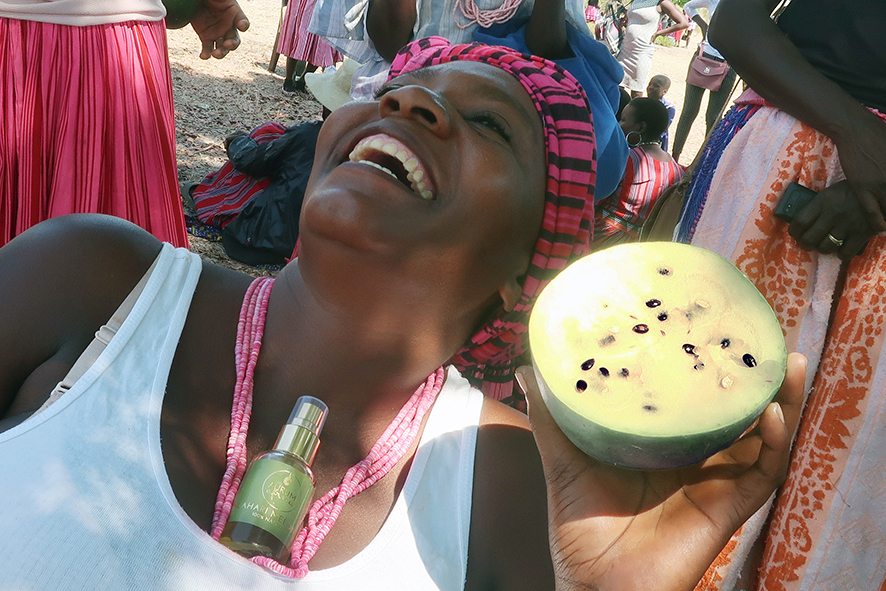The Melon of the Kalahari Desert
The Kalahari Melon (Citrullus lanatus) is one of the lesser known tropical plants. Only recently it has received the attention of reserchers and cosmetic industry thanks to the precious Oil obtained from its seed. Citrullus is the diminutive of Citrus while lanatus refers to the wolly hairs on the young plants.
The Kalahari Melon, also known as “Tsamma“, belongs to Cucurbitacea family. It is highly adapted to surviving drought and the harsh light of the desert environment. Although found all over Southern Africa, it is most closely associated with the Kalahari sands of Namibia, Botswana, south-western Zambia and western Zimbabwe.
The stem of the plant measures about 3 meters, the leaves are broad and the flowers have a yellow colour outside and a green colour inside.

Citrullus lanatus produces a fruit that externally resembles our watrmelon; inside a spongy light green pulp made-up of more than 90% of water. The diameter of the fruits ranges from 6 to 20 centimeters.



Citrullus lanatus seeds are dark brown in color (almost black). They have a lenght ranging from 6 to 12 millimeters. They are made-up of about 35% protein, 50% oil and 5% dietary fibre.








FACTS
The Kalahari Melon represents a precious water resource both for the Bushmen and for the animals of Kalahari Desert.
In 1850 David Livingstone the famous explorer described the species as the most striking of the south african desert.
The plant is known to have been cultivated in the Nile valley as early as 2000 BCE.
As early as 1922, the oil from the raw or boiled seeds was used to moisturize the skin and protect it from sunburn (Van Damme et al., 1922). The hunter-gatherers of the Kalahari Desert chewed the seed and moistened it with saliva to create a cosmetic paste to give the skin a smooth healthy rose-tinted gloss to enhance their medium toned brown skin colour (Bird, 2010).
It has also been used traditionally to produce soap in Namibia and in Central America and to treat acne vulgaris in India (Vermaak et al., 2011)




